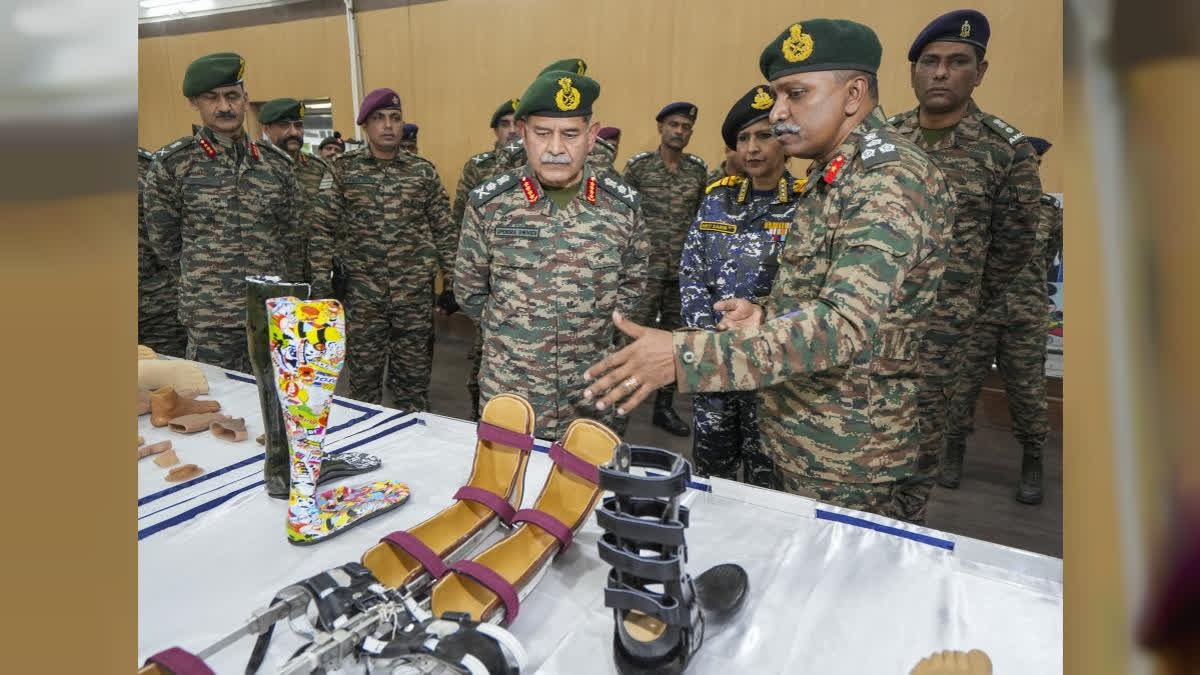New Delhi: Remembering the historic occasion when General (later Field Marshal) late KM Cariappa took over the command of the Indian Army from General Sir FRR Bucher, the last British Commander-in-Chief in 1949 and became the first Indian Commander-in-Chief of Independent India, the ‘Army Day’ is observed every year on January 15.
History
The Indian Army originated from armies of the East India Company which later became the British Indian Army and the Princely States Army, and after independence in 1947, merged into the National Army of India. The units of the Indian Army have fought many battles in the past and gained honour for the country with their bravery.
The Aim
The Indian Army has the sole objective of protecting the nation from any foreign aggression that arises, ensuring India's security. They also try to protect the nation from internal threats. During natural calamities, the Indian Army conducts humanitarian rescue operations to save people’s lives.
Task
The Indian Army is tasked with war-fighting to meet external aggression. The major task of the Indian Army can be divided into four components including internal security management to include internal threats, force projection, peacekeeping operations or military assistance to friendly foreign countries and render humanitarian assistance, disaster relief and aid to civil authorities.
Modernisation
The Indian Army is getting modernised day by day. The major acquisitions are focused on building new capabilities as well as making up for deficiencies in the inventory. With Defence Procurement Procedure-2013 coming into effect, indigenisation will get its due impetus. The Army also carried out alignment of the acquisition structures by streamlining the evolution of General Staff Qualitative Requirements (GSQRs), establishment of a Contracts Negotiation Committee (CNC) Cell and inclusion of Integrated Financial Adviser (IFA) Capital for delegated financial powers and strengthening of the Request for Proposal (RFP) Cell. All these measures have made the system more robust and efficient.
Modernisation of the mechanised forces is underway to meet the requirements of the future battlefield. Upgradation of aspects of in-service equipment like night fighting capability, modern fire control systems and better power packs has been the thrust area. Concurrently, the indigenous development of future combat vehicle platforms is also being progressed. Procurement of Artillery equipment is focused on the conversion of equipment to 155 mm calibre, enhancing surveillance capabilities and acquisition of long range vectors.
Modernisation of the infantry soldier is aimed at enhancing lethality and providing individual protection. Procurement of modern Assault Rifles, Carbines and LMGs along with Bullet Proof Jackets and Ballistic Helmets is underway.
The Corps of Army Air Defence is taking major strides in upgrading its gun and missile systems. A number of quality upgrades and inductions which are in the pipeline would replace the existing vintage equipment. In addition to acquisitions specific to different arms, induction of High Mobility Vehicles, Materials Handling Equipment and critical Rolling Stock for rail movement are in the pipeline. Modernisation of logistics installations with state-of-the-art warehousing facilities, retrieval and accounting systems is also underway.
Synergy with the DRDO
The Army has enhanced its interactions with the Defence Research Development Organisation (DRDO). Projects addressing ammunition needs are being given priority so that India can move towards self-reliance.
Exploiting 5G/6G and Artificial Intelligence
The Indian Army has collaborated with the Ministry of Electronics and Information Technology to develop advanced electronics and infrastructure, aligning with Digital India and Make in India initiatives. 5G laboratories have been established at various locations including the Military College of Telecommunication Engineering (MCTE). In addition, Military grade 5G and 6G laboratories are being established at various locations. MCTE has been developed as a key Centre of Excellence for Artificial Intelligence.
Defence Diplomacy
Keeping with India's rising global stature in recent years, there has been a considerable increase in Defense cooperation activities undertaken by the Indian Army. Accordingly, an increasing number of friendly countries have shown keen interest to engage with the Indian Army, which is the world’s second-largest standing Army with extensive combat experience and exemplary training standards. The Indian Army is engaging with 110 countries through defense cooperation activities.
The Indian Army is participating in 39 exercises, out of which the Indian Army is lead Service in 28 exercises. Keeping in mind the impetus on jointmanship and the impending Theaterisation, eight Indian Army lead exercises have been converted to Bi-Service & six to Tri-Services format.
Women in the Indian Army
The Indian Army is committed to promoting gender neutrality. It is encouraging women officers to join the force by adopting enabling policies for their inclusion. Recently the Army has adopted several initiatives including the Permanent Commission (PC) being granted to Women Officers (WOs) in 12 Arms & Services (in addition to the Army Medical Corps, Army Dental Corps, and Military Nursing Service) where they are commissioned.
The Armed Forces have opened entry for women candidates in the National Defence Academy (NDA) with 19 cadets including 10 for the Indian Army joining the academy every six months. First, Second, and Third batches of women cadets started training in NDA with effect from July 2022, January 2023, and July 2023 respectively.
The Indian Army has also opened avenues for WOs to serve as pilots in the Corps of Army Aviation. The women officers are also being considered for Colonel (Select Grade) ranks and are being given command appointments. Certain waivers have also been given to WOs to rule out any impediment in the career progression of those who could not undergo mandatory career courses during the transition period.



